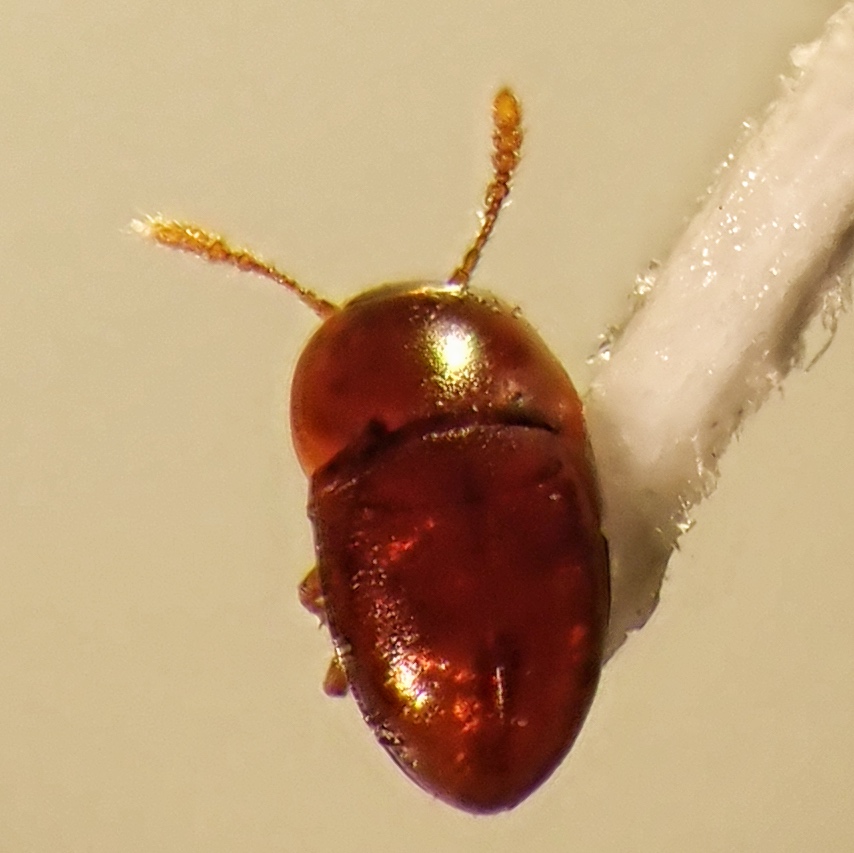
I found this interesting member of the family Leiodidae (round fungus beetles) whilst searching a colony of Trichia varia for springtails. In particular I was hoping to find a specimen in the same species as the one which I hadn’t noticed as it photobombed my T. varia pics. Because of the fact that without good magnification I can’t really make out any details on things under 2mm long I was just using my pooter (a mouth activated vacuum for teenytiny bugs; I call it my bugsucker) on whatever micro bugs I saw. Since it is very difficult to photograph live springtails under the stereoscope without a high probability of having them ‘spring’ away and disappear into the recesses of my study, I euthanized the half dozen specimens I collected, then put them in alcohol and stuck them under the scope. Most of them were mites (and I haven’t delved into that madness yet), one was indeed a springtail (albeit not the same species as my photobomber), and one was this catopocerid (eyeless soil fungivore beetles) in the genus Pinodytes. I had never even heard of these beetles before, and unfortunately it is beyond my ability to identify this to species. In fact, I didn’t even manage identifying it to genus. I had guessed it to be something in the genus Agathidium (same family, different subfamily) because of the association with a myxo (Agathidium are known feeders upon myxogastrids), but one of the experts at BugGuide knew better.
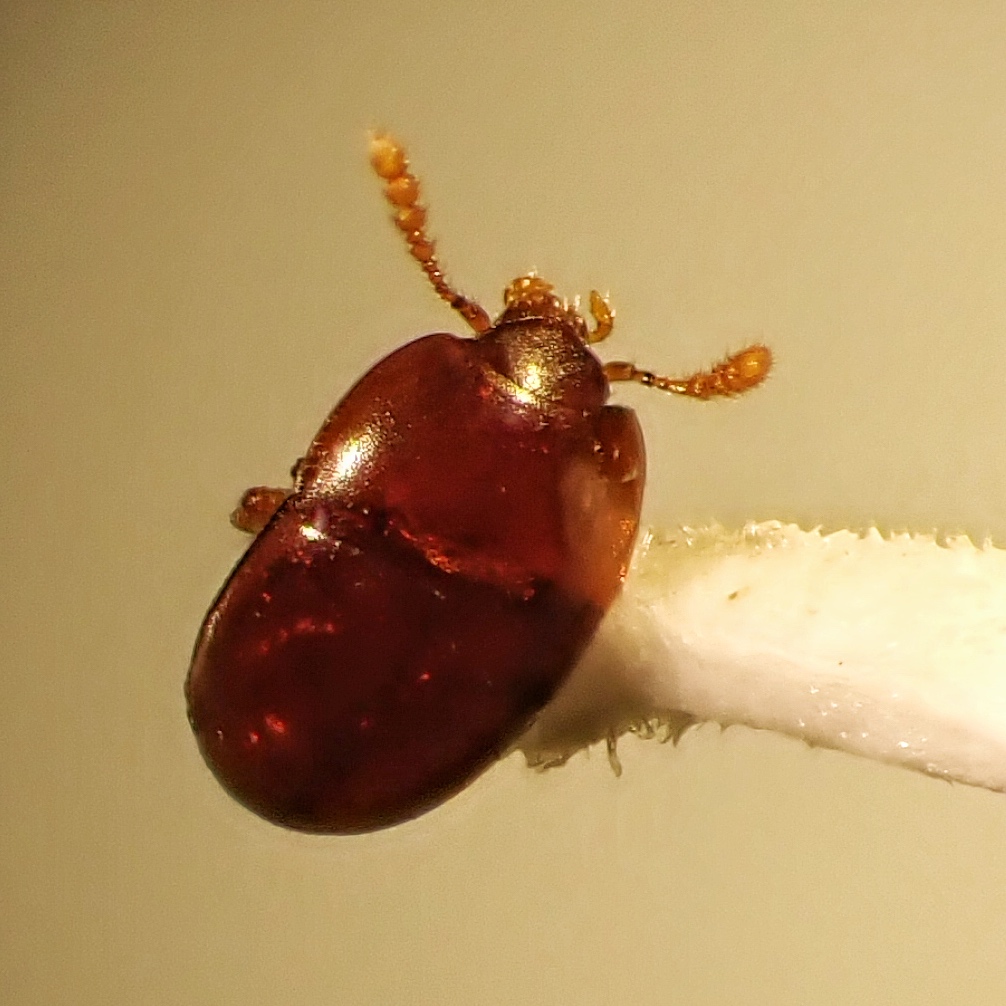
These are eyeless and wingless beetles that may have evolved these adaptations to soil and deep litter foraging as much as 200 million years ago (mya). Up until Peck and Cook’s revision in 2011 there was thought to be only one genus of eyeless soil fungivore beetles in North America, and it was Catopocerus. But when they examined western specimens of the genus Catopocerus, Peck and Cook discovered significant differences between the eastern and western fauna of this group. They hypothesize that the mid-Continental seaway that formed during the Cretaceous period (100-70 mya) separated the related fauna (which, being eyeless and wingless, are rather handicapped as regards dispersal) and fostered differing evolutionary changes, so that catopocerids from west of the Mississippi River are morphologically different from those to the east. Therefore Pinodytes was resurrected to contain the western taxa, and Catopocerus contains the eastern species.
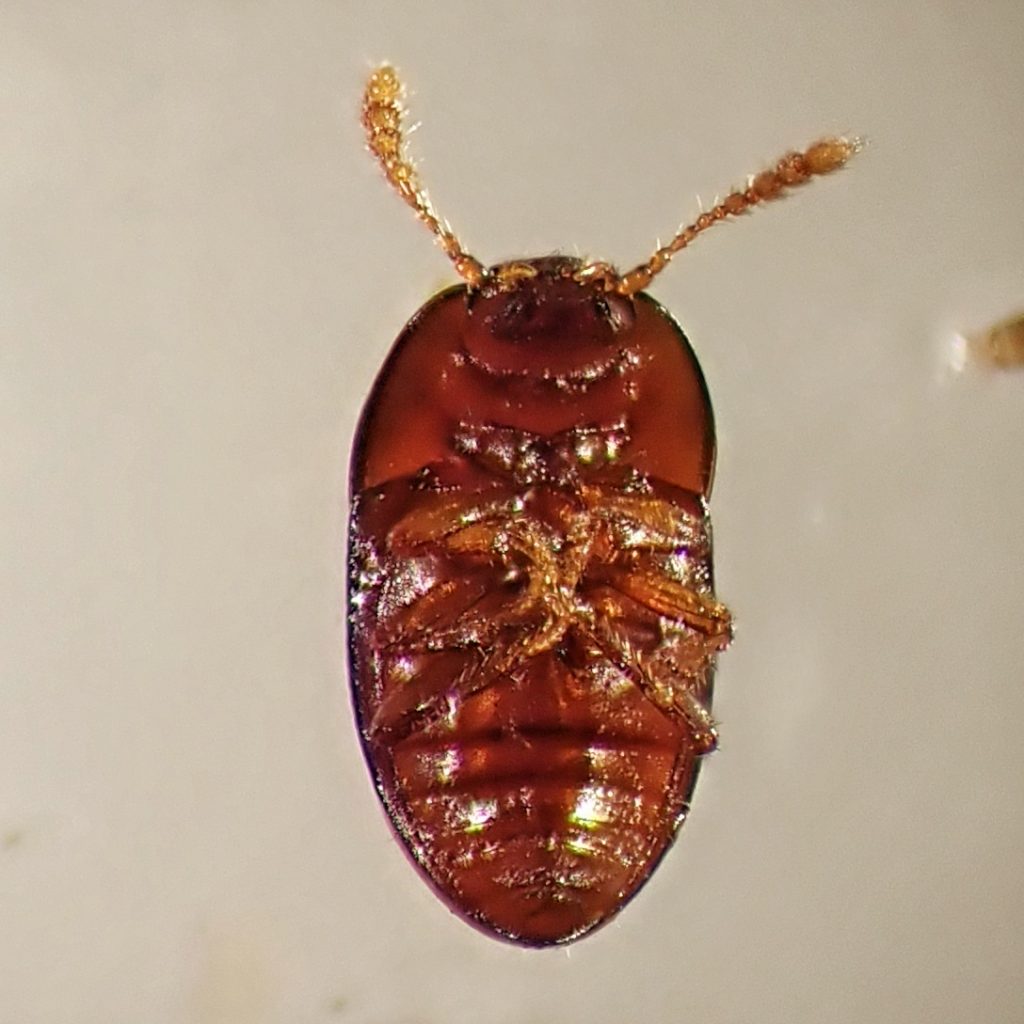
Description-Tiny (this beetle is 1.4mm long), eyeless and wingless, reddish brown, mostly oval with a small head and clubbed antennae; pronotum about half as long as elytra.
Similar species– Superficially resembles many taxa in Leiodidae, and only separable with high magnification and a key; some members of this genus are cave dwellers, and many of those and some other subterranean Pinodytes are colorless.
Habitat– Soil, leaf litter, and under and within logs in forests and woodlands.
Range-Western North America; probably region wide in appropriate habitat.
Eats-Fungus, mostly subterranean, but also within leaf litter and woody debris.
Eaten by– Probably soil burrowing insectivores
Adults active-Probably year around
Life cycle-Unknown
Etymology of names–Pinodytes is from the Greek words for’dirt diver’, a reference to these being soil burrowing beetles.
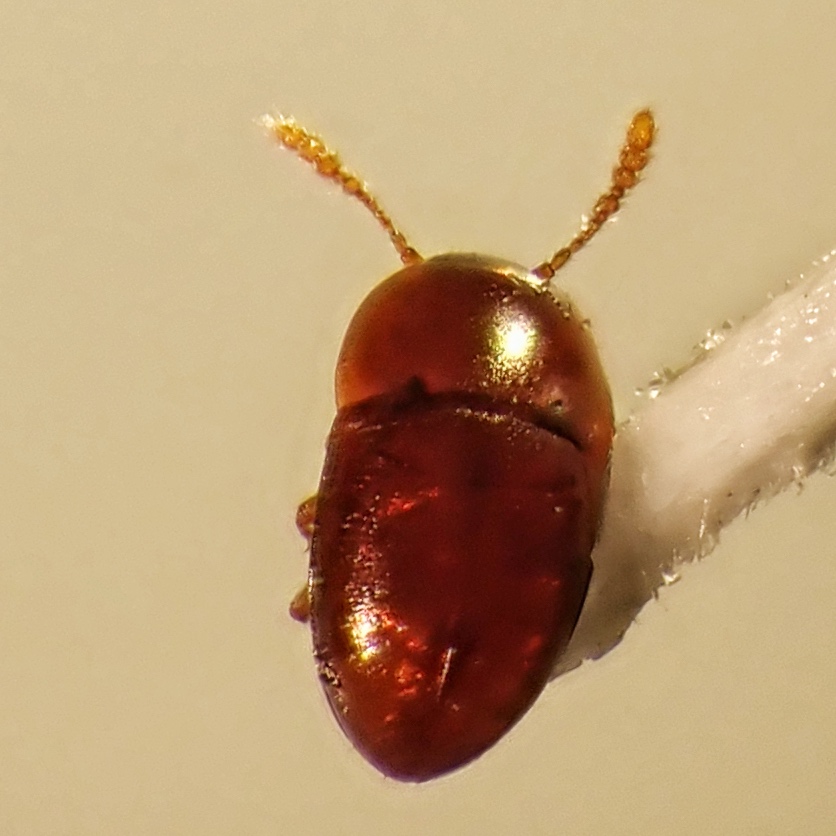
Genus Pinodytes – BugGuide.Net
https://www.mapress.com/zootaxa/2011/f/zt03077p118.pdf
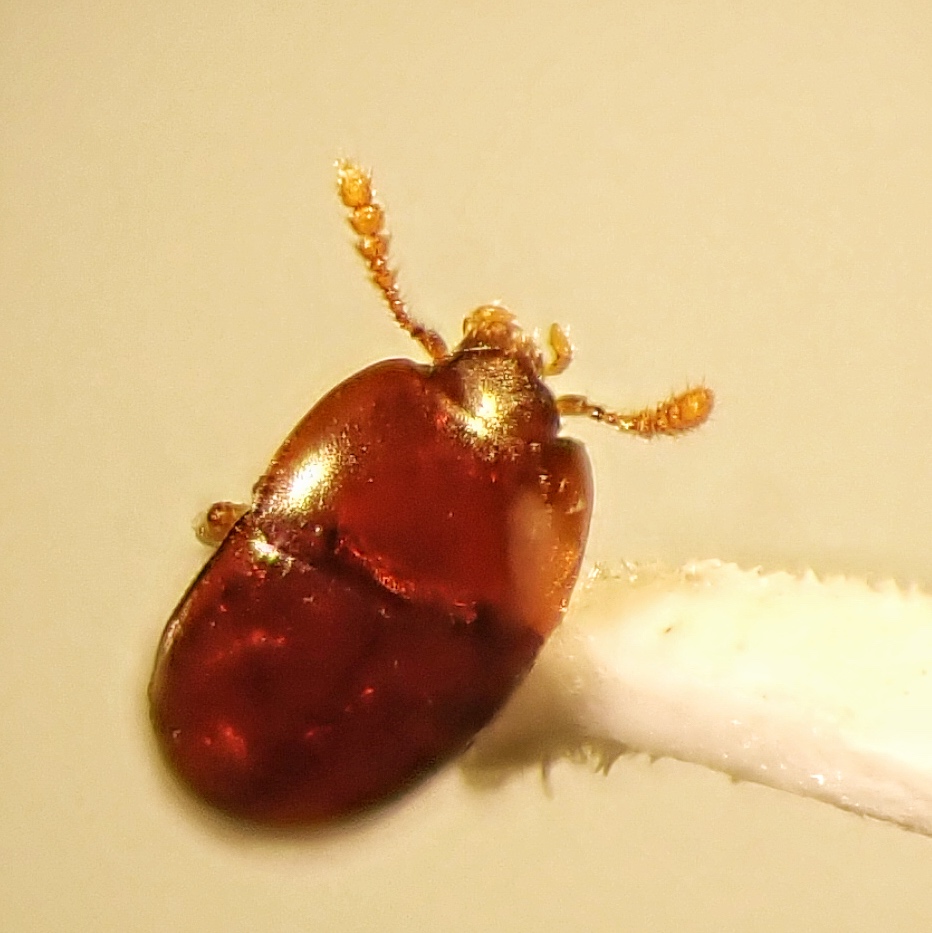
Hi Dan
Just a note to tell you I’m now basically hooked on these posts of yours. Please keep them coming. Withdrawal isn’t fun.
Take care
Trevor
Thanks Trevor! Since I am fairly addicted to finding, identifying, and researching the objects of my posts, I think that, health and wits willing, I’ll be keeping us both hooked up pretty well. In fact I am retiring from gainful employment next month so that I dedicate more time to this project.
Thank you for the very interesting post!
BTW no rush on the “ mite madness “! 😉
Just delaying the inevitable, love!😏